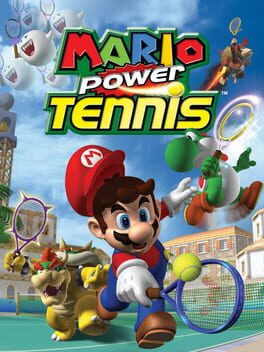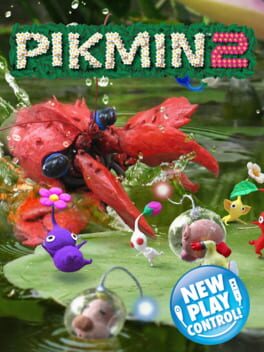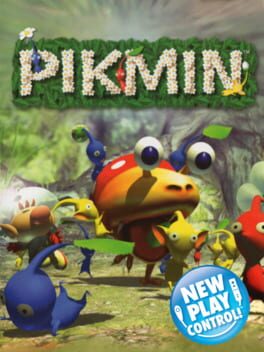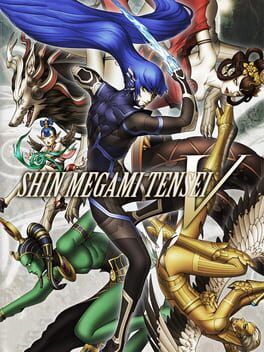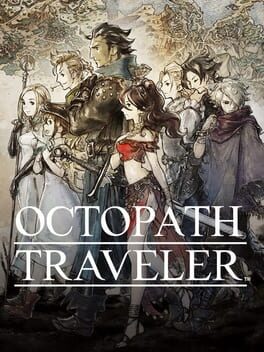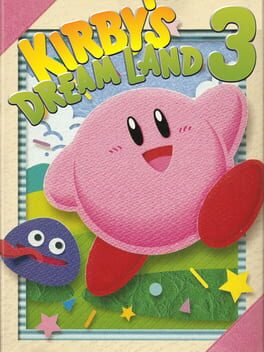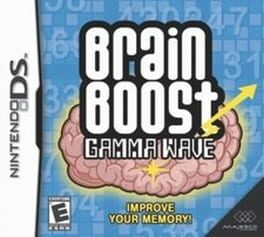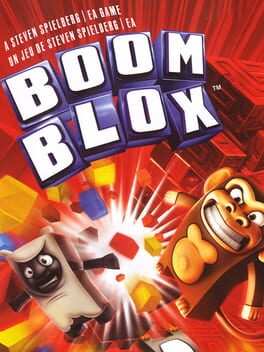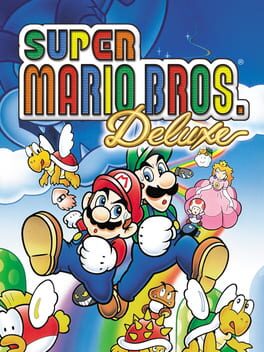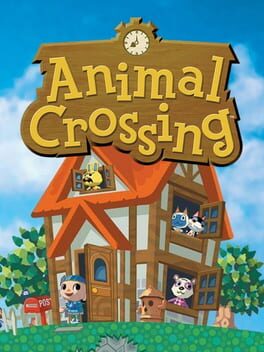static_electric
2004
This game is awesome. The Power Shots are fun, they're kinda overpowered but not as much as the gimmicks introduced in later Mario Tennis titles. You can consistently and effectively counter any of them with any character, it's just difficult to do so. Likewise, the Gimmick Courts are a lot of fun and spice up the game without becoming too overbearing or obnoxious. If you dont like the Power Shots or Gimmicks, you can turn those off in multiplayer matches. There aren't as many characters or courts as there were in the N64 game, but there's greater mechanical and visual variety among the ones included here. And of course, Motoi Sakuraba returns with another great soundtrack.
My only complaint... I wish you could play the CPU doubles tournaments with a friend. Or even a full 16-player tournament mode like in the Smash games, where you hand off controllers to the next players.
My only complaint... I wish you could play the CPU doubles tournaments with a friend. Or even a full 16-player tournament mode like in the Smash games, where you hand off controllers to the next players.
All my thoughts on the first NPC Pikmin apply here as well.
Unlike that game, this has widescreen support, which would have been nice if the UI was moved or redrawn instead of lazily stretched. Sprays are more cumbersome to use in the heat of battle since you have to take your thumb of the A button to reach down and use them. And why did they remove Totaka's Song?
Pikmin 2 is an amazing game, but not this port.
Unlike that game, this has widescreen support, which would have been nice if the UI was moved or redrawn instead of lazily stretched. Sprays are more cumbersome to use in the heat of battle since you have to take your thumb of the A button to reach down and use them. And why did they remove Totaka's Song?
Pikmin 2 is an amazing game, but not this port.
Pikmin is a great game, but I am not a fan of the new control scheme.
It's easier and quicker to aim with the pointer, but the tradeoff is that aiming is much less precise. Swarming awkwardly uses the pointer when it used to be controlled independently of the cursor.
On top of the control issues, you can now rewind to any previous day, cutting any sort of real tension the original had. Some sound effects were mistakenly sped up and sound too high-pitched. There are additional glitches as well.
I can't recommend a shoddy port like this, you're better off playing the GameCube version.
It's easier and quicker to aim with the pointer, but the tradeoff is that aiming is much less precise. Swarming awkwardly uses the pointer when it used to be controlled independently of the cursor.
On top of the control issues, you can now rewind to any previous day, cutting any sort of real tension the original had. Some sound effects were mistakenly sped up and sound too high-pitched. There are additional glitches as well.
I can't recommend a shoddy port like this, you're better off playing the GameCube version.
2021
Shin Megami Tensei V proves, like many other great JRPGs (e.g., Final Fantasy V), that a JRPG is not always defined by its story. The gameplay mechanics, level design, encounter design, world, characters, writing, story, music, visuals, and atmosphere are all pillars that can form the foundation of an RPG, but you don't need all of them for the structure to hold. The written story here is not good, so what? At least it stays out of the way - and frankly, I would rather have that than have a poorly-written story take up a significant portion of runtime. Gameplay can tell its own personal story, and my own experiences of playing through this were memorable and interesting. This game knows what it's good at, it's focused, but I can't deny it feels unfinished.
Field exploration is mostly improved. The areas all have an impressive amount of verticality, and trivial dungeon "puzzles" are replaced with figuring out how to navigate these spaces. Collectibles are useful upgrades to your abilities via Miracles and demon essences, instead of just single-use items or gear. Enemies can easily be avoided on the field.
The entire battling/collection/fusion loop is the best it's ever been in these games. Reverse compendium search, demon essences, more unique skills, the works - it all makes it more fun to experiment with different builds and create tailor-made teams for each encounter. You have to manage buffs/debuffs more now since they don't last forever, and there is a reasonable 2-stack limit. It's good to get players to think about when and where to apply these.
There are couple design desicions I think are a bit misunderstood.
The open-zone level design allows you to easily avoid fighting enemies most of the time. But by avoiding enemies, you miss out on valuable experience points, money, and recruitable demons. So how exactly does this make the game too easy? This is like complaining about the random encounter modifier in Bravely Default. In SMTV, not gaining exp and money puts you at a greater disadvantage, since these things are more valuable than the MP and items consumed during battle. Battles are always a net profit. Allowing you to skip most battles means it's more practical and fun to attempt lower-level runs. If this were a dungeon crawler like previous games, then skipping battles would actually make the game easier because resource management is an issue. However, SMTV is clearly not that kind if game; I think think the open zones complement this change to enemy encounters.
Likewise, level scaling is an important and integral part of the game's balance. If you're a lower level than your opponent, you'll be much weaker. Simple enough. Most RPGs have some form of it. But you can still defeat opponents even 10+ levels above you if you put any effort and thought into your party composition, demon fusions, and actions. I don't know where people are getting the idea that the game is just impossible unless you level up and that stats and moves are meaningless; it's just not true. Analyze your opponents abilities and adjust your party accordingly. Take advantage of the tools at your disposal. To me the aggressive level scaling in SMTV is just another thing that makes the game more fun to play at lower levels. The real issue with the level scaling is that it allows you to become too powerful too quickly when leveling above an opponent.
There are still several issues I have though.
I feel like by now, enemy weaknesses should just be visible from the start. All hiding the weaknesses accomplishes is making you use a spyglass and restart the fight. Magatsuhi is an interesting idea, but it quickly becomes apparently how much more useful Critical is over all the others.
The game as a whole feels unfinished. The level design by itself is good, but the field areas look too similar to each other. There are pockets of visual variety like the fairy village and weird floating cube zone, but they're few and far between. On the three times the game decides to throw a dungeon at you, it's pretty terrible. They're too short and too half-baked to be interesting. I think the game would've been better without these. Major quests are locked behind DLC paywalls. Worse still, a maid dress for Nahobino is not included in any DLC. And obviously, the story is undercooked. The game feels so lacking sometimes that it feels like they planned Vengeance from the start, they probably did.
The core systems of the game are so polished and well-designed that they hold up the experience and make it worthwhile. The presentation ties it all together, with some beautiful (if monotonous) visuals and a stellar soundtrack. I had a really fun time with this one.
Field exploration is mostly improved. The areas all have an impressive amount of verticality, and trivial dungeon "puzzles" are replaced with figuring out how to navigate these spaces. Collectibles are useful upgrades to your abilities via Miracles and demon essences, instead of just single-use items or gear. Enemies can easily be avoided on the field.
The entire battling/collection/fusion loop is the best it's ever been in these games. Reverse compendium search, demon essences, more unique skills, the works - it all makes it more fun to experiment with different builds and create tailor-made teams for each encounter. You have to manage buffs/debuffs more now since they don't last forever, and there is a reasonable 2-stack limit. It's good to get players to think about when and where to apply these.
There are couple design desicions I think are a bit misunderstood.
The open-zone level design allows you to easily avoid fighting enemies most of the time. But by avoiding enemies, you miss out on valuable experience points, money, and recruitable demons. So how exactly does this make the game too easy? This is like complaining about the random encounter modifier in Bravely Default. In SMTV, not gaining exp and money puts you at a greater disadvantage, since these things are more valuable than the MP and items consumed during battle. Battles are always a net profit. Allowing you to skip most battles means it's more practical and fun to attempt lower-level runs. If this were a dungeon crawler like previous games, then skipping battles would actually make the game easier because resource management is an issue. However, SMTV is clearly not that kind if game; I think think the open zones complement this change to enemy encounters.
Likewise, level scaling is an important and integral part of the game's balance. If you're a lower level than your opponent, you'll be much weaker. Simple enough. Most RPGs have some form of it. But you can still defeat opponents even 10+ levels above you if you put any effort and thought into your party composition, demon fusions, and actions. I don't know where people are getting the idea that the game is just impossible unless you level up and that stats and moves are meaningless; it's just not true. Analyze your opponents abilities and adjust your party accordingly. Take advantage of the tools at your disposal. To me the aggressive level scaling in SMTV is just another thing that makes the game more fun to play at lower levels. The real issue with the level scaling is that it allows you to become too powerful too quickly when leveling above an opponent.
There are still several issues I have though.
I feel like by now, enemy weaknesses should just be visible from the start. All hiding the weaknesses accomplishes is making you use a spyglass and restart the fight. Magatsuhi is an interesting idea, but it quickly becomes apparently how much more useful Critical is over all the others.
The game as a whole feels unfinished. The level design by itself is good, but the field areas look too similar to each other. There are pockets of visual variety like the fairy village and weird floating cube zone, but they're few and far between. On the three times the game decides to throw a dungeon at you, it's pretty terrible. They're too short and too half-baked to be interesting. I think the game would've been better without these. Major quests are locked behind DLC paywalls. Worse still, a maid dress for Nahobino is not included in any DLC. And obviously, the story is undercooked. The game feels so lacking sometimes that it feels like they planned Vengeance from the start, they probably did.
The core systems of the game are so polished and well-designed that they hold up the experience and make it worthwhile. The presentation ties it all together, with some beautiful (if monotonous) visuals and a stellar soundtrack. I had a really fun time with this one.
2018
That I enjoyed this as much as I did I think is a testament to the fundamentals of great JRPG design. From the more restricted (compared to Bravely Default/Second/FF5) yet better-balanced job system, to the combat which branches off from the Bravely series with its own shield and weakness mechanics, to the beautiful town and dungeon designs, to the excellent soundtrack composed by Yasunori Nishiki, reminiscent of the Romancing Saga soundtracks.
Because if all that stuff wasn't as good as it is, I wouldn't have wanted to push through the forgettable story and bland world. The characters are well-written, but the 4-chapter setup makes their stories feel quite predictable and samey. The true final boss gauntlet is one of the biggest difficulty spikes I've seen in an RPG... not sure whether I'm impressed or annoyed by that.
Because if all that stuff wasn't as good as it is, I wouldn't have wanted to push through the forgettable story and bland world. The characters are well-written, but the 4-chapter setup makes their stories feel quite predictable and samey. The true final boss gauntlet is one of the biggest difficulty spikes I've seen in an RPG... not sure whether I'm impressed or annoyed by that.
1997
Dream Land 3 is one of those games that appears lacking on the surface, but everything comes together in such a unique and beautiful way.
The animal friends are back along with three new ones, and it's tons of fun playing around with different ability/animal combinations. Cleaning was added as a new ability, it's really cute (especially with Nago) and many of its animal combinations are surprisingly effective against enemies. The sprites and animations are all super expressive.
The level designs are basic as with most Kirby games, though still quite memorable and fun. Each stage has its own puzzle you must solve to get a heart star, all of which are needed to face the final boss.
The visual and sound direction is some of the best in the entire Kirby series, only surpassed by Epic Yarn and Mass Attack.
You don't have as many techniques and moves as you do in Super Star or any other main game after 64. But, to me, Kirby isn't about that stuff anyway.
If it isn't obvious enough from the above, or from my Epic Yarn review, Kirby games are something I admire deeply not only on a gameplay level, but on an aesthetic one. If I wanted to play an action-platformer, there are many more challenging and engaging options out there for me besides Kirby. But Dream Land 3 offers something I can't get elsewhere, quite literally a land of dreams filled with incredible charm and atmosphere. It even has 2-player coop.
The animal friends are back along with three new ones, and it's tons of fun playing around with different ability/animal combinations. Cleaning was added as a new ability, it's really cute (especially with Nago) and many of its animal combinations are surprisingly effective against enemies. The sprites and animations are all super expressive.
The level designs are basic as with most Kirby games, though still quite memorable and fun. Each stage has its own puzzle you must solve to get a heart star, all of which are needed to face the final boss.
The visual and sound direction is some of the best in the entire Kirby series, only surpassed by Epic Yarn and Mass Attack.
You don't have as many techniques and moves as you do in Super Star or any other main game after 64. But, to me, Kirby isn't about that stuff anyway.
If it isn't obvious enough from the above, or from my Epic Yarn review, Kirby games are something I admire deeply not only on a gameplay level, but on an aesthetic one. If I wanted to play an action-platformer, there are many more challenging and engaging options out there for me besides Kirby. But Dream Land 3 offers something I can't get elsewhere, quite literally a land of dreams filled with incredible charm and atmosphere. It even has 2-player coop.
2008
2023
As someone whose favorite Pikmin game is 2 specifically because of its brutal dungeon-crawling, Pikmin 4 seemed to be exactly what I was looking for...
Caves are back, this time with a focus on puzzles. While I prefer the enemy gauntlets of 2, the puzzle caves fit better with 4's weaker combat controls (more on that later). Some of these caves are really clever, like the Below-Grade Discothèque and the Frozen Inferno. The final cave has two of my favorite bosses in the series. They're all a lot of fun to go through.
The areas are huge, way larger than any previous Pikmin game, and they're no longer segmented like they were in 3. They're designed with more open exploration in mind, like the first Pikmin, which is much appreciated. One of the biggest problems I had with 2 was how linear and pointless the overworlds felt. 4 has a more sensible balance between the surface and underground. Confusingly though, overworld enemies never respawn after being killed. Almost seems unintentional.
The controls are by far the largest problem, and really the only major problem. Continuing the trend from Pikmin 3, the controls have been simplified and the Pikmin AI improved. Lock-on is no longer something you decide to use, you just lock on to everything automatically and cannot easily switch targets. It's especially frustrating when there are several small enemies and treasure all bunched together, which happens a lot. The motion aiming will never feel as good as it does on Wii/Wii U because the Switch lacks a sensor bar. Oatchi is able to carry all 100 Pikmin and move around, removing the need to herd a massive squad through dangerous territories. It all just feels so... automated, as if the game plays itself. Positioning and aiming are no longer important.
It also relies way too much on Pikmin 2 nostalgia for my taste. Now I love Pikmin 2, but I'm not impressed when the game very often is "hey, remember that thing from Pikmin 2? here it is again." There are many more caves to explore, but there are only about the same number of cave themes - all pulled from 2 except the museum one. I knew upon seeing an underwater cave named the "Engulfed Castle" that the Waterwaith would show up - what I didn't know was that the entire cave layout would copy the Submerged Castle verbatim. I knew the Ultimate Testing Range would have the Man-at-Legs. I knew once I found Purple Pikmin that there would be a treasure in the final area that weighs 1000. Why else would they be here if there are barely any other heavy treasures, and their combat role has been supplanted by Rock and Ice? Pikmin 4 pulls all the same little tricks 2 did, and they all fell flat for me. It's disappointing because the game shines much more when it's developing its own new ideas, like more intricate cave puzzles. It didn't need the Pikmin 2 fanservice.
Both of the above issues are made worse by how long this thing is. I was ready for it to end after clearing the 4th area, but there are two more after! Solid game, but this stuff really drags it down for me. In the end, it just feels like a watered-down Pikmin 2.
Caves are back, this time with a focus on puzzles. While I prefer the enemy gauntlets of 2, the puzzle caves fit better with 4's weaker combat controls (more on that later). Some of these caves are really clever, like the Below-Grade Discothèque and the Frozen Inferno. The final cave has two of my favorite bosses in the series. They're all a lot of fun to go through.
The areas are huge, way larger than any previous Pikmin game, and they're no longer segmented like they were in 3. They're designed with more open exploration in mind, like the first Pikmin, which is much appreciated. One of the biggest problems I had with 2 was how linear and pointless the overworlds felt. 4 has a more sensible balance between the surface and underground. Confusingly though, overworld enemies never respawn after being killed. Almost seems unintentional.
The controls are by far the largest problem, and really the only major problem. Continuing the trend from Pikmin 3, the controls have been simplified and the Pikmin AI improved. Lock-on is no longer something you decide to use, you just lock on to everything automatically and cannot easily switch targets. It's especially frustrating when there are several small enemies and treasure all bunched together, which happens a lot. The motion aiming will never feel as good as it does on Wii/Wii U because the Switch lacks a sensor bar. Oatchi is able to carry all 100 Pikmin and move around, removing the need to herd a massive squad through dangerous territories. It all just feels so... automated, as if the game plays itself. Positioning and aiming are no longer important.
It also relies way too much on Pikmin 2 nostalgia for my taste. Now I love Pikmin 2, but I'm not impressed when the game very often is "hey, remember that thing from Pikmin 2? here it is again." There are many more caves to explore, but there are only about the same number of cave themes - all pulled from 2 except the museum one. I knew upon seeing an underwater cave named the "Engulfed Castle" that the Waterwaith would show up - what I didn't know was that the entire cave layout would copy the Submerged Castle verbatim. I knew the Ultimate Testing Range would have the Man-at-Legs. I knew once I found Purple Pikmin that there would be a treasure in the final area that weighs 1000. Why else would they be here if there are barely any other heavy treasures, and their combat role has been supplanted by Rock and Ice? Pikmin 4 pulls all the same little tricks 2 did, and they all fell flat for me. It's disappointing because the game shines much more when it's developing its own new ideas, like more intricate cave puzzles. It didn't need the Pikmin 2 fanservice.
Both of the above issues are made worse by how long this thing is. I was ready for it to end after clearing the 4th area, but there are two more after! Solid game, but this stuff really drags it down for me. In the end, it just feels like a watered-down Pikmin 2.
2010
It's a better Breath of the Wild purely for the fact that it's a sandbox with more interesting toys to play with. Everything I like and dislike about Breath of the Wild applies here.
The reused surface map is lame, there's no getting around that for me. I felt no sense of discovery walking through the world of this game. It's the same map with new repeated content. It's all the same stuff as Breath of the Wild like Korok seeds and sidequests and such, but didn't I already do enough of this in the last game? Why do I have to do the same grinds again? The new shrines and dungeons are the same as before, samey and poorly integrated into the world. It all works well enough, but frankly it's boring and I was hoping to see less busywork. Reusing maps can work, it's just that nothing here is fundamentally different from Breath of the Wild.
The sky and depths are cool aesthetically, but they don't really add a lot. I almost wish the depths didn't have lightroots since they kinda take away the edge and danger. The gloom effects are cool at least, mechanically and aesthetically. The aesthetics in general are a strong suit and look more interesting than the Sheikah stuff.
Fuse is an interesting idea, but in practice it's kind of awkward and forces you to pause the game to use weapons even more than Breath of the Wild did. Ideally there should've been some kind of favorites hotbar or something instead of just the entire inventory. Once again, the game gives you way too many resources for the weapon durability to be anything more than a nuisance. It really should've been removed or reworked this time around.
Ultrahand alone almost carries the game. But the issue is that you need to farm ore in the depths to go get random parts from gacha machines in the sky, which is quite tedious and boring. I wouldn't mind it so much of the depths and sky were more interesting to explore, but they're both rather barren. You basically only go there for this stuff, which makes it feel like a chore. The battery charge, even at max, feels so short. Objects despawn after walking just a little bit away. Maybe they made it this way to better balance the mechanic, but the most effective creations are usually rather simple and take few resources to autobuild. As a result, I never felt the desire to be creative or experiment.
Then I tried playing it on Yuzu with infinite stamina, infinite weapon durability, and infinite battery, and wow - what a difference that all makes. Suddenly I was having a lot of fun creating all sorts of contraptions and experimenting with the physics system. It's true that games are built around limitations, and those limitations can breed creativity. Personally, I would rather be limited by this game's tools and engine themselves than by arbitrary resource farming. Maybe I'm lazy, but I don't care.
The reused surface map is lame, there's no getting around that for me. I felt no sense of discovery walking through the world of this game. It's the same map with new repeated content. It's all the same stuff as Breath of the Wild like Korok seeds and sidequests and such, but didn't I already do enough of this in the last game? Why do I have to do the same grinds again? The new shrines and dungeons are the same as before, samey and poorly integrated into the world. It all works well enough, but frankly it's boring and I was hoping to see less busywork. Reusing maps can work, it's just that nothing here is fundamentally different from Breath of the Wild.
The sky and depths are cool aesthetically, but they don't really add a lot. I almost wish the depths didn't have lightroots since they kinda take away the edge and danger. The gloom effects are cool at least, mechanically and aesthetically. The aesthetics in general are a strong suit and look more interesting than the Sheikah stuff.
Fuse is an interesting idea, but in practice it's kind of awkward and forces you to pause the game to use weapons even more than Breath of the Wild did. Ideally there should've been some kind of favorites hotbar or something instead of just the entire inventory. Once again, the game gives you way too many resources for the weapon durability to be anything more than a nuisance. It really should've been removed or reworked this time around.
Ultrahand alone almost carries the game. But the issue is that you need to farm ore in the depths to go get random parts from gacha machines in the sky, which is quite tedious and boring. I wouldn't mind it so much of the depths and sky were more interesting to explore, but they're both rather barren. You basically only go there for this stuff, which makes it feel like a chore. The battery charge, even at max, feels so short. Objects despawn after walking just a little bit away. Maybe they made it this way to better balance the mechanic, but the most effective creations are usually rather simple and take few resources to autobuild. As a result, I never felt the desire to be creative or experiment.
Then I tried playing it on Yuzu with infinite stamina, infinite weapon durability, and infinite battery, and wow - what a difference that all makes. Suddenly I was having a lot of fun creating all sorts of contraptions and experimenting with the physics system. It's true that games are built around limitations, and those limitations can breed creativity. Personally, I would rather be limited by this game's tools and engine themselves than by arbitrary resource farming. Maybe I'm lazy, but I don't care.
Breath of the Wild is a breath of fresh air for the series with its focus on freedom and minimal story, but in that sense it's also a return to form. It perfectly captures the explorative spirit of the original Legend of Zelda more than any Zelda game since.
Open world games tend to bore me unless the core game systems themselves are fun to interact with. This is why I really enjoy the collectathon 3D Mario games (64, Sunshine, Odyssey) despite their often-poor level design and lack of well-crafted discrete challenges. Breath of the Wild follows in the footsteps of Mario 64 and Sunshine by having the most involved mechanics in the series up to this point. The core combat system isn't as advanced as Twilight Princess, but the gaps are made up by how exploration and combat are no longer separate things. Any part of the environment can be used against enemies or against you in some way. The enemy variety feels pretty low for a world this size, but I think the increased number of interactions and behaviors of each of them make up for it.
The world design is beautiful, as usual for Monolith, but they really outdid themselves here. It's amazing to me how every area has it's own distinct look, with dozens upon dozens of intricately-crafted landmarks. The villages are the most fully realized of any in the series aside from Clock Town. It's truly a delight to explore, and the vistas you see are rewarding in and of themselves.
What's most impressive is how they were able to create an open world that truly feels like a living, breathing place. The game doesn't string you along a long, boring story questline, but there are four mini-main quests if you want to do the main dungeons. The scenery isn't just props, almost everything is interactable. Everything exists for you to play and experiment with, as a sandbox should be. That's not to say there isn't any of the typical open-world garbage here like boring sidequests and meaningless collectables, there's just a lot less, and it's not the focus.
It's easy for me to say I am annoyed by the weapon durability system, but it really depends on the context. See, the game is at its best when it pits you against the wild and makes you use limited resources efficiently. The problem is that this scenario happens only twice; the Great Plateau and Eventide Island. If you take any time to explore at all instead of running straight to Hyrule Castle, you're going to easily stock up on resources. There are so many Korok seeds, weapons, and cooking ingredients to be found that you never really feel like you're in danger. And this is when the weapon durability shifts from tense scavanging just to survive into merely an annoyance that necessitates opening the menu to equip something else. It works on the Great Plateau, but quickly becomes balanced way too far in your favor to be a worthwhile or interesting mechanic to consider. You can just intentionally avoid gathering resources to challenge yourself, but the spongy enemies (which collectively get stronger as you keep playing by the way) keep this from being enjoyable. I think a better solution would be to either force more survival moments by limiting resources more, or to have a medium-strength weapon, bow, and shield always be available after a certain point, which could be upgraded similar to gear. The Master Sword doesn't count.
The Shrines and Divine Beasts are interesting concepts in theory, but they're unimaginative aesthetically and contain puzzles so simple that they're unsatisfying to solve even using unintentional methods. I would rather have seen dungeons that are built into the world itself. Hyrule Castle proves you can have seamless open-ended dungeons that still have some defined puzzles and combat encounters. Instead though, we have 120 ugly shrines which don't blend well at all with the environment.
Once you explore everything and do all the shrines, then what? Well, then the game turns into a sandbox. Open this up in Cemu and enable infinite weapon durability, then go do all sorts of crazy stuff. Kill Ganon with a spoon. Build a minecart flying machine that lasts forever unlike anything in Tears of the Kingdom. Again like the open 3D Mario games, this is a game that relies a lot on your intrinsic motivation to find your own fun.
I had a really great time with it, but honestly I don't think I would ever replay it from a fresh save. There's too much grinding and boring resource-gathering, none of it was that compelling the first time, and I'm not doing it again. But on a rainy day, I'll gladly emulate it with all the fun hacks and mods and whatnot that are available now.
Open world games tend to bore me unless the core game systems themselves are fun to interact with. This is why I really enjoy the collectathon 3D Mario games (64, Sunshine, Odyssey) despite their often-poor level design and lack of well-crafted discrete challenges. Breath of the Wild follows in the footsteps of Mario 64 and Sunshine by having the most involved mechanics in the series up to this point. The core combat system isn't as advanced as Twilight Princess, but the gaps are made up by how exploration and combat are no longer separate things. Any part of the environment can be used against enemies or against you in some way. The enemy variety feels pretty low for a world this size, but I think the increased number of interactions and behaviors of each of them make up for it.
The world design is beautiful, as usual for Monolith, but they really outdid themselves here. It's amazing to me how every area has it's own distinct look, with dozens upon dozens of intricately-crafted landmarks. The villages are the most fully realized of any in the series aside from Clock Town. It's truly a delight to explore, and the vistas you see are rewarding in and of themselves.
What's most impressive is how they were able to create an open world that truly feels like a living, breathing place. The game doesn't string you along a long, boring story questline, but there are four mini-main quests if you want to do the main dungeons. The scenery isn't just props, almost everything is interactable. Everything exists for you to play and experiment with, as a sandbox should be. That's not to say there isn't any of the typical open-world garbage here like boring sidequests and meaningless collectables, there's just a lot less, and it's not the focus.
It's easy for me to say I am annoyed by the weapon durability system, but it really depends on the context. See, the game is at its best when it pits you against the wild and makes you use limited resources efficiently. The problem is that this scenario happens only twice; the Great Plateau and Eventide Island. If you take any time to explore at all instead of running straight to Hyrule Castle, you're going to easily stock up on resources. There are so many Korok seeds, weapons, and cooking ingredients to be found that you never really feel like you're in danger. And this is when the weapon durability shifts from tense scavanging just to survive into merely an annoyance that necessitates opening the menu to equip something else. It works on the Great Plateau, but quickly becomes balanced way too far in your favor to be a worthwhile or interesting mechanic to consider. You can just intentionally avoid gathering resources to challenge yourself, but the spongy enemies (which collectively get stronger as you keep playing by the way) keep this from being enjoyable. I think a better solution would be to either force more survival moments by limiting resources more, or to have a medium-strength weapon, bow, and shield always be available after a certain point, which could be upgraded similar to gear. The Master Sword doesn't count.
The Shrines and Divine Beasts are interesting concepts in theory, but they're unimaginative aesthetically and contain puzzles so simple that they're unsatisfying to solve even using unintentional methods. I would rather have seen dungeons that are built into the world itself. Hyrule Castle proves you can have seamless open-ended dungeons that still have some defined puzzles and combat encounters. Instead though, we have 120 ugly shrines which don't blend well at all with the environment.
Once you explore everything and do all the shrines, then what? Well, then the game turns into a sandbox. Open this up in Cemu and enable infinite weapon durability, then go do all sorts of crazy stuff. Kill Ganon with a spoon. Build a minecart flying machine that lasts forever unlike anything in Tears of the Kingdom. Again like the open 3D Mario games, this is a game that relies a lot on your intrinsic motivation to find your own fun.
I had a really great time with it, but honestly I don't think I would ever replay it from a fresh save. There's too much grinding and boring resource-gathering, none of it was that compelling the first time, and I'm not doing it again. But on a rainy day, I'll gladly emulate it with all the fun hacks and mods and whatnot that are available now.
2008
This is the best game Stephen Spielberg directed. It's a fun physics simulator with some really inventive puzzle levels. They can get pretty challenging, too, especially if you're going for Gold ranks. Boom Blox also has some of the most seamless and intuitive motion control implementation of any Wii game, it just feels right being able to aim and throw stuff with this level of precision.
As a physics sandbox, the Create mode is definitely a highlight. You have so many toys to work with here and you can create some great levels of your own with set goals, or just whatever you like. They let you use some more interesting toys here that aren't found in the main levels, like the bowling ball hose - the greatest weapon in any game. Just an endless stream of high-velocity bowling balls that obliterates everything.
As a physics sandbox, the Create mode is definitely a highlight. You have so many toys to work with here and you can create some great levels of your own with set goals, or just whatever you like. They let you use some more interesting toys here that aren't found in the main levels, like the bowling ball hose - the greatest weapon in any game. Just an endless stream of high-velocity bowling balls that obliterates everything.
You can add all the content and extra features and Game Boy Printer support that you want, but none of it will ever change the fact that this is an extremely compromised way to play Super Mario Bros. and The Lost Levels. Keeping the sprites and level design exactly the same when the screen is only ⅜ths the resolution was a really poor decision. Even the Super Mario Advance releases had the common sense to adjust the level designs a bit to compensate for the slightly lower resolution of the GBA compared to the SFC/SNES.
Check it out for the extras, but if all you want is Super Mario Bros., you're much better off playing the original 1985 version or even the All-Stars version (with the brick fix patch).
Check it out for the extras, but if all you want is Super Mario Bros., you're much better off playing the original 1985 version or even the All-Stars version (with the brick fix patch).
2001
Unfortunately, Doubutsu no Mori + and Animal Crossing aren't listed separately on Backlogged. Make no mistake, these are two separate games, so this will be a double review discussing their changes from Doubutsu no Mori.
With the + version, you are essentially getting the complete Japanese-style Doubutsu no Mori experience. All the Japanese furniture and character designs are back, with a plethora of added ones. The most notable additions of course are the Able Sisters, Museum, and Animal Island. In addition, + has real-life Japanese holidays you can partake in.
Animal Crossing, as was usual at the time, is a rather heavy-handed localization of Doubutsu no Mori +. But to the team's credit, there are a surprising amount of new ideas and events here, some of which would go on to become series staples, such as Groundhog Day, Valentine's Day, and the Harvest Festival. Still, with the existence of e+, the original western Animal Crossing is in an awkward place. While it's the one I personally spent the most time with, I wouldn't recommend it today over either Doubutsu no Mori + or e+.
If you haven't yet tried out N64/GC-era Animal Crossing, you can't really go wrong with +. Highly recommended.
With the + version, you are essentially getting the complete Japanese-style Doubutsu no Mori experience. All the Japanese furniture and character designs are back, with a plethora of added ones. The most notable additions of course are the Able Sisters, Museum, and Animal Island. In addition, + has real-life Japanese holidays you can partake in.
Animal Crossing, as was usual at the time, is a rather heavy-handed localization of Doubutsu no Mori +. But to the team's credit, there are a surprising amount of new ideas and events here, some of which would go on to become series staples, such as Groundhog Day, Valentine's Day, and the Harvest Festival. Still, with the existence of e+, the original western Animal Crossing is in an awkward place. While it's the one I personally spent the most time with, I wouldn't recommend it today over either Doubutsu no Mori + or e+.
If you haven't yet tried out N64/GC-era Animal Crossing, you can't really go wrong with +. Highly recommended.
